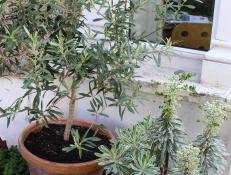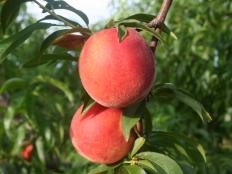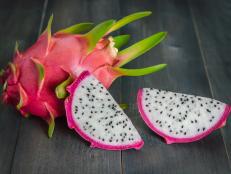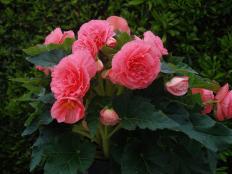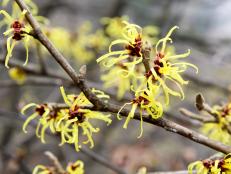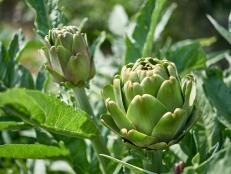How Far Apart Do You Plant Apple Trees?
Learn how to space apple trees when planting plus more info about choosing trees and growing apples.


Imagine, in the years ahead, biting into that crisp, sweet apple that you pluck from the tree that you’ve planted in your garden. Whether it’s a single tree, a couple, or a grove of apple trees, where and how you plant can increase the success of fresh-off-the-tree apples in your future.
Most apple trees produce best when there is more than one tree to increase cross-pollination. When you plan your planting site, allow enough space between trees for them to spread their limbs, with room to maneuver between the trees for the necessary pruning, thinning, and – of course – harvesting. The spacing depends on the type of tree: a row of full-size trees should be planted 15 to 18 feet apart; dwarf varieties can be closer, 6 to 8 feet apart in a row.
Prepare to Plant
Before you put your hopes in those trees, it’s best to do a little homework. Different varieties have specific needs – in particular, the number of hours of chilly weather each year — and are better suited for some locations and climates than others, so it’s a good idea to learn what varieties grow best where you live. The Cooperative Extension Service in your area can provide information about which apple varieties offer the best chance of success. An extension agent can also tell you if a specific variety is self-fertile, or if it will need a second tree nearby for cross-pollination.
The best placement for a single tree or a grove of apple trees is in full sun, in well-drained soil, away from other trees and outside of any low-lying area that could form a “frost pocket” where cold air settles.
It’s also a good idea to have the soil tested before you plant. Apple trees (and other fruit and nut trees) do best in soil with a pH level of 6.5 (in a range of 0 to 14, acid to alkaline, 7 is pH neutral). If the soil is much outside that range either way, add amendments several months before you plant, if possible.
Planting Time
In cold northern climates, spring is the best time to plant apple trees. In areas where winter is less severe, early spring or late fall planting is recommended.
Remove weeds and grass in a 4-foot circle and dig a hole about 2 feet deep and twice the diameter of the root ball of the tree. Return some of the loose soil to the hole and spread the tree’s roots over the soil, adding more soil. If you’re planting a container-grown tree, remove the root ball from its container, place it into the hole and backfill with loose soil. In either case, since most trees are grafted, make sure the graft union – you’ll see it as a swelling at the base of the trunk – is above the soil.
Water the area thoroughly after you plant, and regularly as the tree is establishing its root system. If you use mulch, make sure it does not pile up against the tree’s trunk.
Beyond that, the secret to enjoying the first apple harvest is patience. Depending on the variety and the tree size at planting time, it may take two, four or more years for the tree to be mature enough to begin fruiting. Trees grown on dwarf rootstock generally bear fruit sooner.
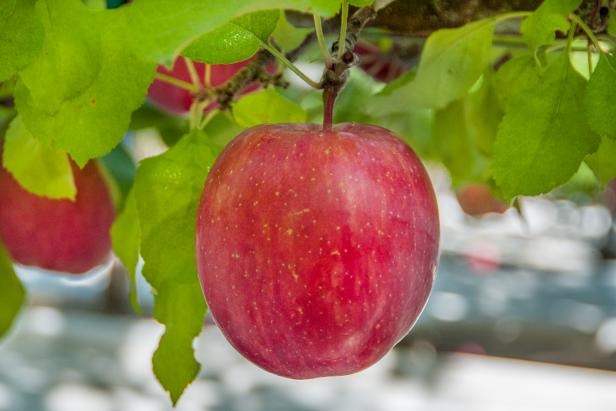
Washington Apple Commission
‘Fuji’ apple has been around since the 1930s, when it was first developed in Japan. A true heirloom apple, ‘Fuji’ offers crisp, sweet flesh.
Popular Apple Varieties
There are thousands of varieties of apples grown around the world. Here’s a tiny sampling of familiar favorites, listing the variety, flavor, uses, and USDA Plant Hardiness Zone:
- Honeycrisp: Sweet and crunchy, stores well, USDA Hardiness Zones 3-7
- McIntosh: Tart, juicy with a little crunch, good for snacking and pies, Zones 4-7
- Red Rome: Mildly tart, better for baking than eating raw, Zones 4-8
- Gala: Sweet apple flavor, good for cooking and snacking, stores well, Zones 5-8
- Stayman: Tart and sweet, good for eating, Zones 5 – 8
- Fuji: Sweet, good for fresh eating and for cider and juice, Zones 6 – 9
- Pink Lady: Subtle tart flavor, good for fresh eating, Zones 6-9







